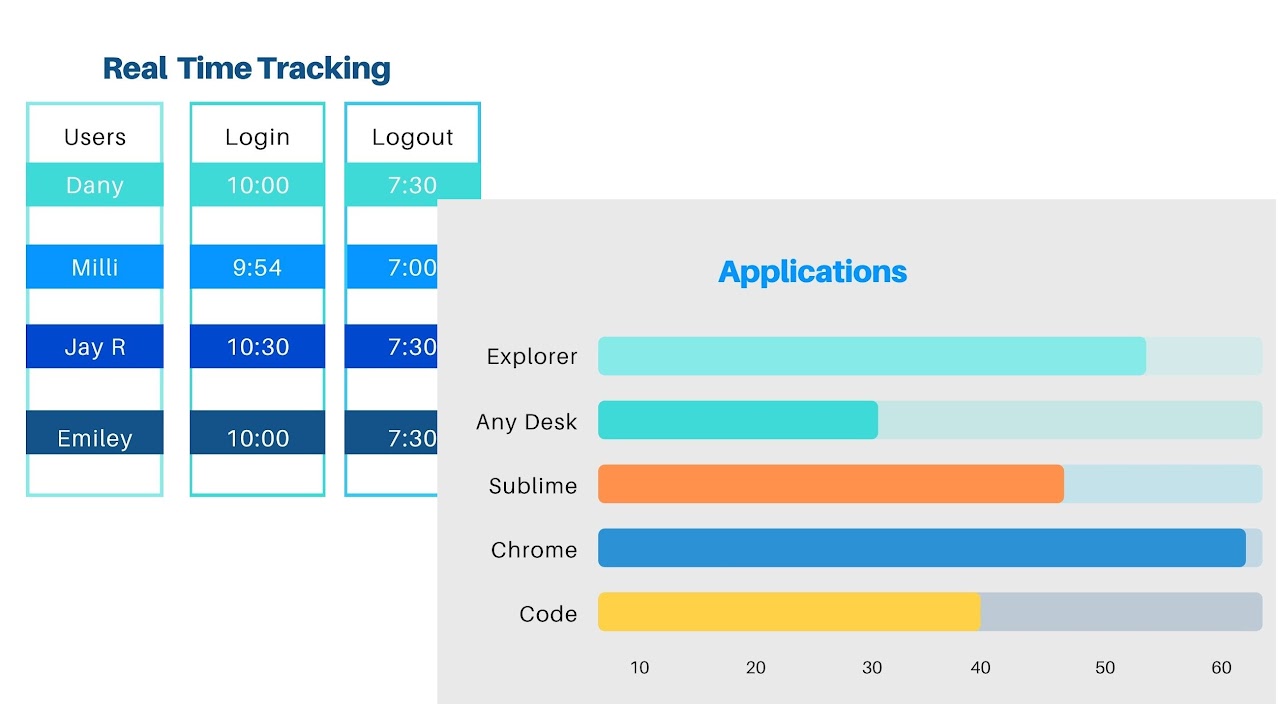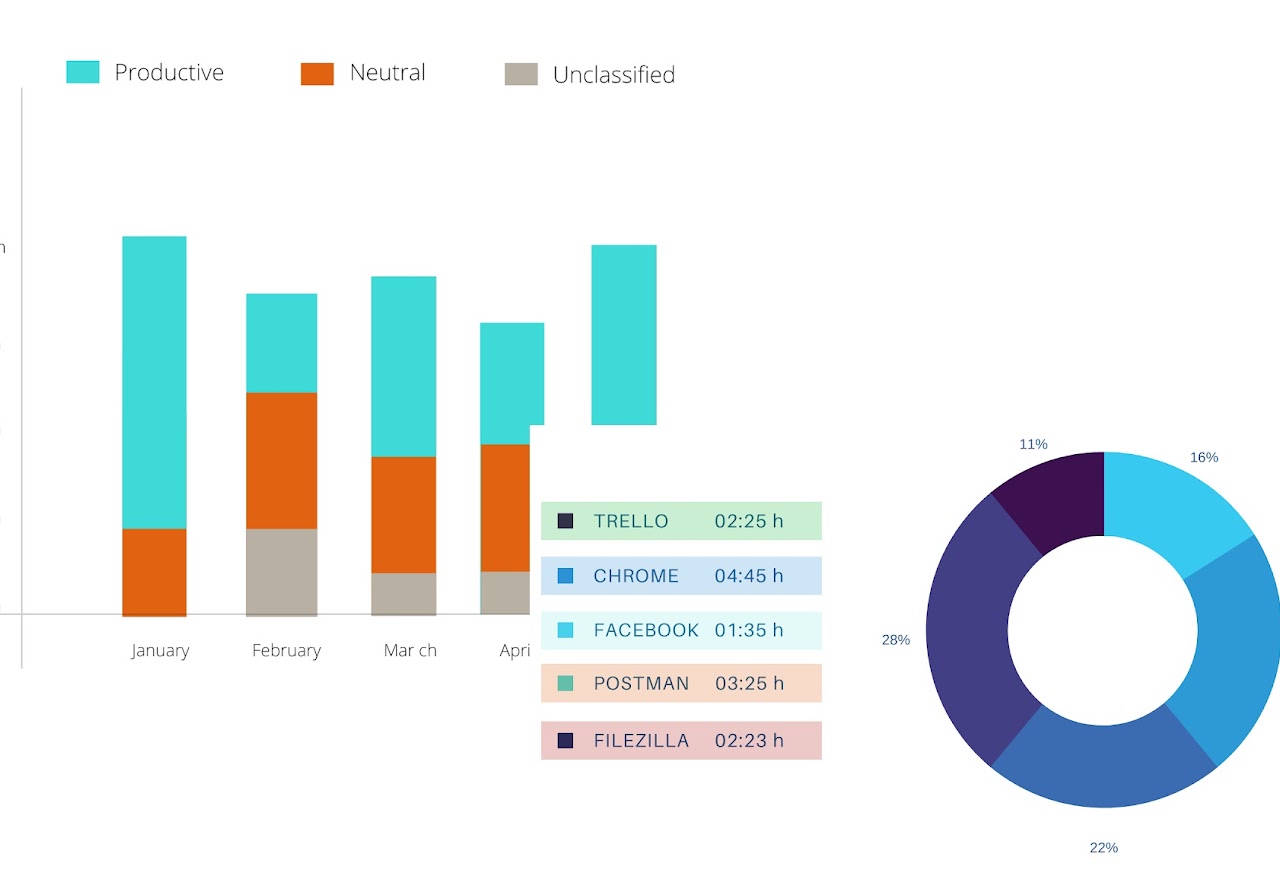Manage and monitor virtual team time, productivity and activity to increase their performance. Teamob virtual employee monitoring software helps you to run your business more effectively by increasing productivity.
Pens and stationery aren't the only items that might be taken from the office. Time theft is a significantly more severe form of theft that occurs in many businesses. Employers are expected to be facing a $400 billion problem.
Employees that bill their employer for the time they have not actually worked are known as time thieves. It can take many different shapes. Time theft is complicated further by the fact that it can be difficult to detect. It can take years to find a time that has been stolen, and this is not an exaggeration. And the longer it goes on, the worse it grows and the more expensive it becomes.
These undetected time thefts are usually high risk for remote workers, freelancers, and virtual assistants. Today, we will discuss specifically why employing time tracking for virtual assistants can prove a winning strategy for time management.
It seems like only yesterday you decided to recruit a virtual assistant, and now you have hundreds of individuals working on different projects at different times across time zones.
On the surface, the amount of time you save by deploying a virtual workforce may excite you. However, the disconcerting reality is that your virtual team's time management may be wasting dozens or hundreds of hours on a regular basis. Therefore, purchase tools to help time tracking in the virtual assistant industry.

We probably don't need to describe the conceptual benefits of time management if you're reading this post and already use — or are considering utilizing — virtual assistant services. However, it's easy to underestimate the impact minor productivity improvements can have on your business: for many enterprise-level companies, shaving just five minutes off a repetitive procedure may release hundreds, if not millions, of dollars in annual revenue.
If you're in charge of a large staff of virtual assistants, time management is crucial. It might be difficult to efficiently manage time, attendance, vacation, breaks, and other activities.

Thousands of hours of precious time can slip through the cracks if left unchecked for too long, resulting in time theft.
Finding a balance between keeping your virtual assistants as productive as possible while assuring the quality of all the vital jobs they're completing is the key to time-tracking virtual assistants' time management tactics.
It's a straightforward enough equation, but it can be difficult to use in practice.
Poor planning, a lack of direction, and insufficient screening account for the majority of the wasted virtual assistant time. When appropriate methods and structures are missing, asking a completely virtual workforce to provide perfection is difficult.

One obvious ultimate deliverable.
Better business management and productivity begin with explicitly describing the flawless ultimate outcome in specific and "unmissable" terms.
When you know what the end result must be, it's easier to create a path to get there that's obvious, efficient, and less prone to time slippage.
So, before implementing a new process with your virtual assistants, show them what the ultimate deliverable should look like, then break down the steps to get there into a straightforward step-by-step list.

The best candidate for the job
Determine which skill sets are required for the present work and assign those duties to a virtual assistant with the most complementary skill set.
There are hundreds of different virtual assistant tasks; thus, a "one size fits all" approach will eventually result in inefficiency.
A research-savvy virtual assistant, for example, is ideal for activities that require you to locate information. On the other hand, if you require real-time customer support, that's the specialty you'll need to employ.
Create the ideal strategy
A strategy isn't worth much unless it has been demonstrated to work. A good virtual assistant plan educates your virtual assistants on what to do and how to think.
Opening a feedback loop to get input on how your virtual assistants perceive the step-by-step involvement in the completion of their assignment is necessary.
Before handing over the step-by-step list to a virtual assistant:
1. Have a buddy or another member of your team complete it.
2. As with your virtual assistants, provide them with the same onboarding context.
3. Once you've finished, evaluate whether your plan performed as planned, get feedback, and tweak it before putting it into action with the help of your virtual assistant team.
Before enlisting the help of virtual assistants, you should know your process inside and out and then test and iterate as new performance data becomes available.
Data is your ally.
You'll need statistics on your side to fully assess how effective your virtual assistants are.
Data allows you to see how virtual assistants use their time and how productive they are. There will be no more depending on assumptions or hunches.
Businesses can use productivity software like TeamOB to track individual and team productivity over specific time periods (like when a new cohort of virtual assistants joined your team), benchmark top performers (to figure out why they succeed and others don't), and support employee overall wellbeing.
Concluding Remarks
At the end of the day, every part of your virtual assistant workforce, including how you analyze time management, boils down to processes.
Employee productivity monitoring systems, such as TeamOB's, with a user-friendly KPI dashboard, allow you to assess virtual workforce performance while also keeping a feedback loop to improve it.
The objectivity of the data you obtain from virtual assistant software cuts through the noise of a frantic virtual assistant workforce to accurately see how productive and efficient your procedures are.
Organizations may analyze and reward great performers based on their productivity thanks to the continuous flow of real-time data provided by software like TeamOB.
It promotes individual and team development through data-driven transparency that allows time tracking for virtual assistant teams to assess their own success.
Organizations may detect bottlenecks and average job completion rates by letting the data speak for itself, allowing them to better assist their virtual assistants in staying healthy and motivated.
Increase the efficiency of your virtual team by team performance based on tasks, projects or deadlines.
Get full report of team performance and track virtual assistant work efficiency through an dynamic real-time dashboard.
Use behavioral insights to understand how to make your virtual team productive.
Optimize your team performance by keep tracking productivity works daily, weekly or monthly.


Virtual employee monitoring provides the power to improve your virtual team performance by utilizing their time to deliver work.
Track your employees app and website usage to prevent time.
Break large projects task into small tasks which will helps your employee to work efficiently and deliver quality product and increase the productivity.
Check if the employee is having workload, in such case provides support from another team member to reduce workload.

